As a runner, you take excellent care of your feet. You’ve got the newest foot massager, the fanciest socks, and the best running shoes money can buy. But how much attention are you paying to the real workhorse of your workouts—your oft-neglected yet strong calves?
From warm-up and cool-down to rest days, you’ll want a solid stack of calf stretches for runners in your repertoire. That’s why you’re here, after all. So let’s not delay. Here’s how to take the best care of your calves.
Best Calf Stretches
1. Standing Gastroc Stretch
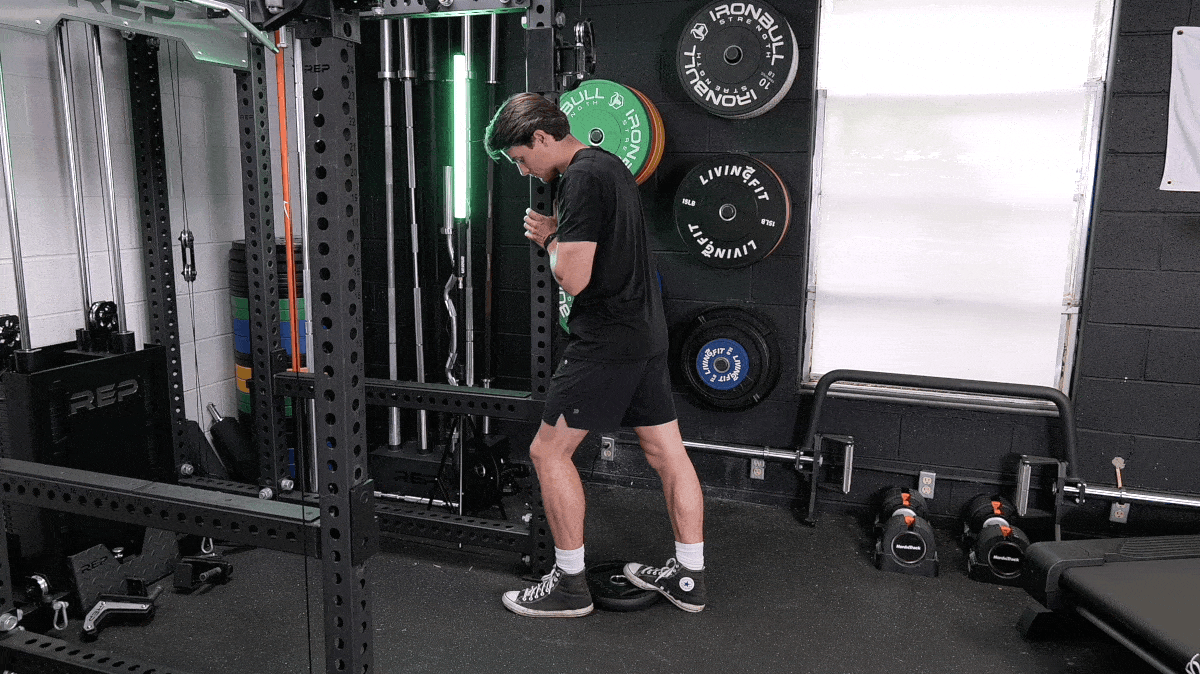
| Equipment Needed | Slightly inclined ramp or wedge. |
| Muscles Worked | Gastrocnemius and soleus |
| Sets & Reps | 2-4 sets of 30-60 seconds per side. |
The standing gastroc stretch is a classic, it’s probably the most intuitive calf stretch you’ll come across and requires minimal effort to execute. Just find an inclined surface or a wedge and you’re ready to start relaxing your calf muscles. Be sure to hold the stretch for equal duration per side! (It’s OK to give a little extra love to a tighter side — for example, your left calf — if need be. Just don’t neglect one side entirely.)
How to Do It:
- Place an inclined ramp or wedge against a wall.
- Take your right foot and place it on the wedge with your right heel sitting at the base.
- Keep your right foot flat against the ramp as you lightly lean forward. Keep your left foot back a step to support your balance.
- Maintain a slight bend in your right knee and hold this stretch for time.
Modifications
- Make it Easier: Reduce the incline of the ramp or wedge, or take a more gentle lean forward.
- Make it Harder: Actively perform a toe raise with your right leg as you stretch your right calf.
2. Seated Soleus Stretch
| Equipment Needed | Weight bench (or chair), slightly inclined ramp or wedge. |
| Muscles Worked | Gastrocnemius and soleus |
| Sets & Reps | 2-4 sets of 30-60 seconds per side. |
The gastrocnemius and soleus make up your calf and benefit from most calf stretches; however, a standing or seated position helps to emphasize one or the other. Stretching from a seated position places the other part of your calf (the soleus muscle) in a better position to experience a stretch. Be sure to do both to cover all parts of your lower back legs and help avoid calf strains.
How to Do It:
- Position a weight bench or chair near an inclined ramp or wedge.
- Take a seat and place your right foot on the wedge. Make sure your shin angle is straight up and down in your starting position, almost like in a lunge.
- Slightly lean forward while pushing your knee forward and feeling the ball of your foot. Be sure to keep full foot pressure and not lose heel contact.
- Hold this stretch for time and switch legs to do the opposite side.
Modifications
- Make it Easier: Start with a slightly negative shin angle. Instead of your shin being completely up-and-down when you start, allow it to take a backwards angle towards your body.
- Make it Harder: Start with a slightly forward shin angle. Lean into the stretch by starting in a more flexed ankle position to start!
3. Standing Calf Raise
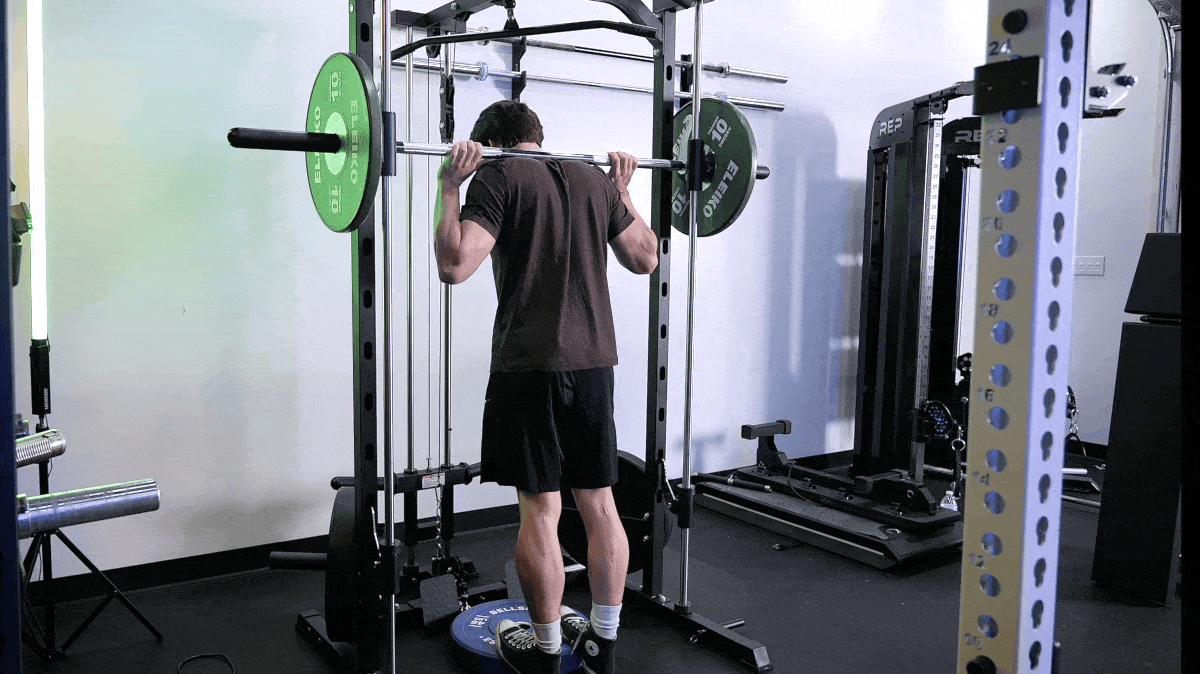
[Read More: Benefits of Standing Calf Raises]
| Equipment Needed | Body weight, dumbbells, or machine resistance. |
| Muscles Worked | Gastrocnemius and soleus |
| Sets & Reps | 2-4 sets of 12-15 repetitions. |
Performing resistance exercises might not be the most intuitive form of stretching, but it still “counts”! The eccentric portion of each repetition in strength training is where you are lowering yourself back into a starting position under control. This intentional lengthening of the muscle fibers while bearing weight is actually a fantastic tool for stretching.
How to Do It:
- Grab a pair of dumbbells or line yourself up under the standing calf raise machine (any resistance works here).
- Brace your core and push through the balls of your feet. Be sure to maintain a slight bend in your knees.
- Squeeze your calf muscles as tight as possible at the top, then slowly lower yourself into a deep stretch.
- Repeat for repetitions.
Modifications
- Make it Easier: Adjust the load to make sure you are able to perform 15 repetitions.
- Make it Harder: Extend the length of time you linger in the stretch or perform one leg at a time for a single-leg, unilateral approach.
4. Seated Calf Raise
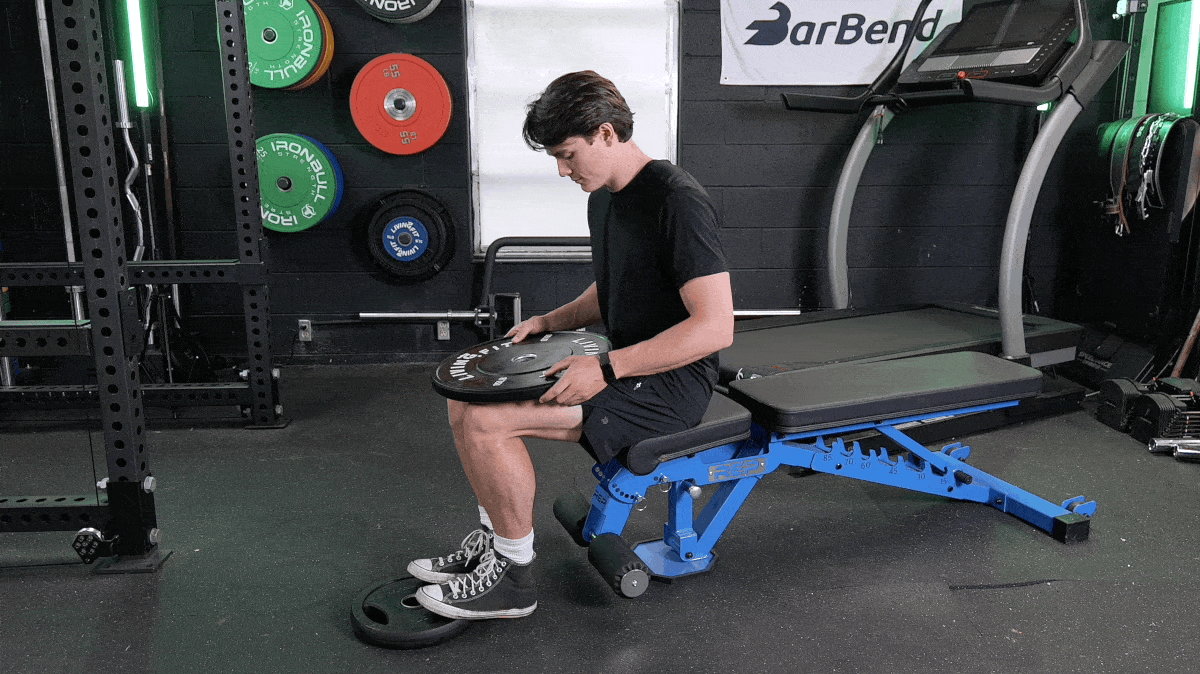
| Equipment Needed | Weight bench, body weight, dumbbells, or machine resistance. |
| Muscles Worked | Gastrocnemius and soleus |
| Sets & Reps | 2-4 sets of 12-15 repetitions. |
The seated calf raise targets the soleus muscle with a bit more emphasis, as the seated calf stretch did before. Although all stretches and exercises for your calf muscles help both, using a mix of both standing and seated versions helps you nail the nitty gritty details. Similar to the standing version, the seated calf raise helps you stretch out using the loaded eccentric portion of each repetition.
This version might also be easier on your body if you’ve got plantar fasciitis, knee pain, or back pain. It’ll take your quads out of the equation, too, putting all the emphasis on those calves.
How to Do It:
- Hold a pair of dumbbells (or a weight plate) on your thighs or line yourself up under the seated calf raise machine (any resistance works here).
- Starting from a bent knee position (at an approximately 90-degree angle), push through the balls of your feet.
- Squeeze your calf muscles as tight as possible at the top, then slowly lower yourself into a deep stretch.
- Repeat for repetitions.
Modifications
- Make it Easier: Similar to the standing version, adjust the load to make sure you are able to perform higher repetitions. Aim for 12 to 15 here.
- Make it Harder: Extend the length of time you linger in the stretch or perform higher load sets of 10 repetitions.
5. Toe Raise
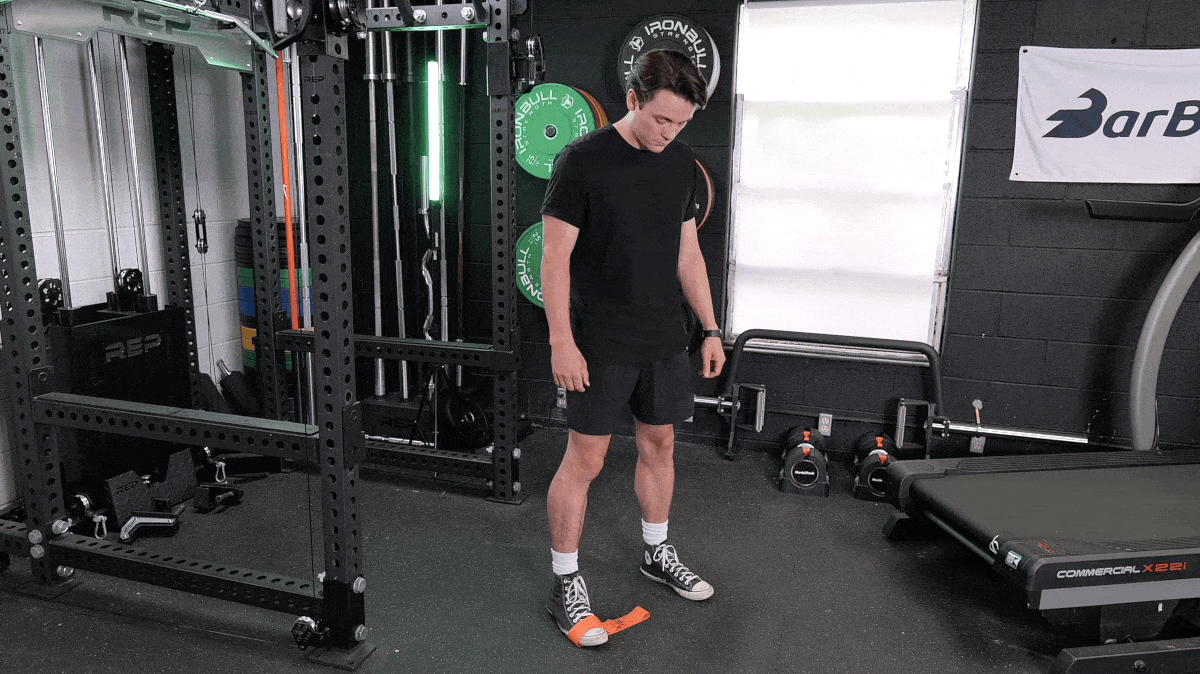
| Equipment Needed | Weight bench (or floor), resistance band or body weight. |
| Muscles Worked | Tibialis anterior |
| Sets & Reps | 2-4 sets of 12-15 repetitions. |
This one might seem even less intuitive than a calf raise, but there is a sound principle behind the toe raise for calf stretching. Your muscles experience a phenomenon called reciprocal inhibition. This is when one muscle contracts and its antagonist (the opposite side muscle) relaxes reflexively. For one side to work, the other must not; therefore, toe raises help to calm down your tight calves. (1)
How to Do It:
- Take a seat on a bench with your shins slightly ahead of your body. (You can also do this standing, as featured above.) Place a resistance band around your toes and anchor it to a heavy weight on the floor or a stable surface.
- Start with your feet flat on the floor and flex your shin muscles, drawing your toes upward towards your body.
- Hold a strong tibialis anterior contraction for a solid 1-2 seconds before lowering back to the starting position.
- Repeat for repetitions.
Modifications
- Make it Easier: Perform your toe raises with your knees at 90 degrees for a shorter range of motion but a tighter squeeze. You can also perform these without a resistance band.
- Make it Harder: Increase the resistance of the band and control the eccentric portion of your toe raise.
Sample Calf Warm-Up for Runners
Warming up the calves becomes more obviously important as you increase your run frequency or duration. A sound calf warm-up helps to mobilize your lower body and allows you to maintain clean running form. Don’t skip this step before you step up to the starting line!
The Warm-Up
Your calf warm-up does not need to be long—just a solid lap around each of the mentioned stretches and exercises as needed. One to two circuits of the stretches should be sufficient for most cases, but you can modify them as you see fit. Since these are all relatively low intensity, you don’t need to worry about it sapping your running strength. Just keep your weight level modest for the calf raises (consider bodyweight versions).
[Read More: Try This Dynamic Warm-Up for Running]
Equipment Needed: Bodyweight, a wedge or ramp, and a pair of dumbbells.
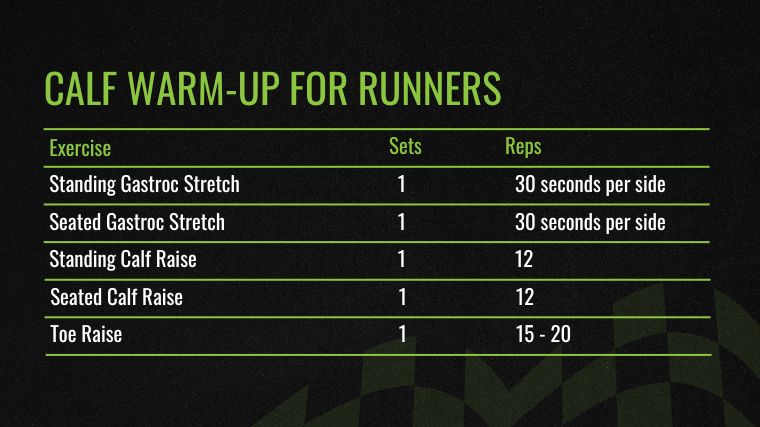
- Standing Gastroc Stretch: 1 x 30 seconds per side
- Seated Gastroc Stretch: 1 x 30 seconds per side
- Standing Calf Raise: 1 x 12
- Seated Calf Raise: 1 x 12
- Toe Raise: 1 x 15-20
Modifications
- Make it Easier: Take a slight rest between stretches or exercises during the circuit to prevent a loss of form.
- Make it Harder: Add load (dumbbells, bands, or if you’re lucky enough, a machine) to your calf and toe raises.
Sample Calf Cool-Down for Runners
The cool-down is your final stamp on a hard workout. Let your body come down from its runner’s high with this stretching assortment.
The Cool-Down
The cool-down is a natural tapering off of the running workout and blends nicely back into some of the movements of your warm-up. You’re still looking after your calf muscles here but in a much more relaxing way than the ramping-up effect of a warm-up.
[Read More: The Best Post-Run Stretches for Your Cool-Down (+ A Stretch Routine From a Personal Trainer)]
Equipment Needed: Body weight only
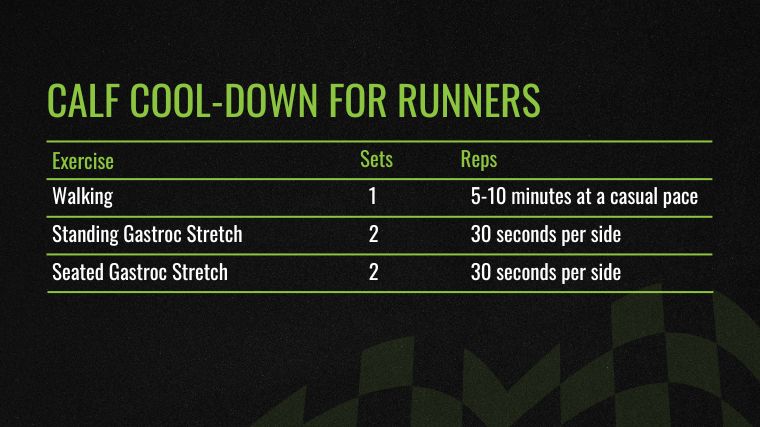
- Walking: 5-10 minutes of walking at a casual pace
- Standing Gastroc Stretch: 2 x 30 seconds per side
- Seated Gastroc Stretch: 2 x 30 seconds per side
Modifications
- Make it Easier: The cooldown is meant to be easy already—if you’re still feeling too much exertion, just reduce your pace even further.
- Make it Harder: You won’t necessarily be looking to make things harder, but to help increase the effectiveness of your cool down, maintain focus on form and antagonist contraction during your stretches.
Anatomy of the Calves
Your calf muscles are composed of two major players—the gastrocnemius and the soleus. The gastrocnemius is a more superficial muscle that sits on top of the soleus. The soleus muscle is a bit lower down and lies underneath the gastrocnemius. Both muscles act synergistically to perform calf raises and control the ankle but have different strengths in different positions.
- Gastrocnemius: The gastrocnemius performs ankle plantarflexion (calf raises) and has the best leverage when you perform them with a straighter knee.
- Soleus: The soleus also performs ankle plantarflexion but has a better advantage when you do so with a flexed knee.
Benefits of Stretching Your Calves
Stretching your calves is a fairly straightforward task, which may be why many skip this part of their routine. Stretching your calf muscles helps to provide relaxation which then improves ankle mobility and running form. Any time spent stretching also helps provide time for mindfulness.
It Encourages Calf Relaxation
The repeated impacts from running are notorious for adding up to some seriously tight muscles. In some cases, they can result in painful shin splints or even low back stiffness. Staying on top of calf stretches can help to prevent this ball from rolling downhill. A few strategic stretches before and after your run are a fantastic and proactive tool for calf relaxation.
It Enhances Ankle Mobility
Mobility is different from flexibility. Mobility is your capacity to control the ranges of motion you have access to whereas flexibility is simply the amount of length a muscle goes through. Ankle mobility is therefore extremely important for a ton of exercises, including running.
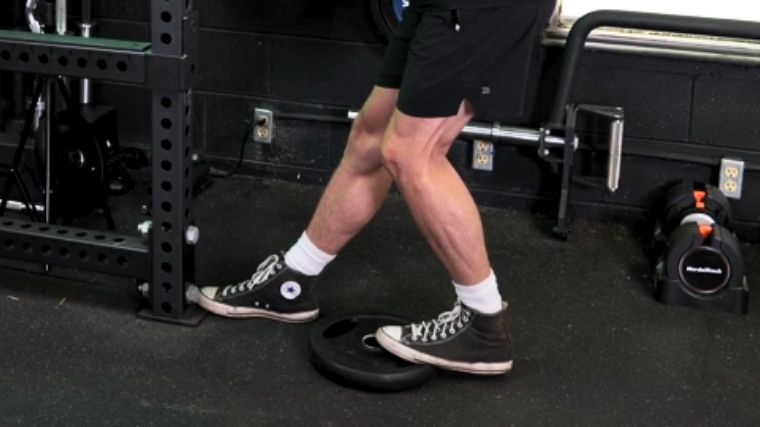
[Read More: Improve Ankle Mobility Foolproof Exercises]
Calf stretches that incorporate eccentric loading and reciprocal inhibition are all about control. Not only does this control help to stretch things out through loaded movements, but also guarantees active and intentional movement through all the ranges of motion you’ll need for running.
It Improves Running Form
Running form is critical for performance and injury risk management. If you’re experiencing some sticky calf muscles, your other running muscles such as the hamstrings, glutes, and hip flexors may also be compensating.
Stay on top of your technique by maintaining the machine—stretch out your calves and allow all the other lower body muscles to do their thing, too!
It Takes a Moment for Mindfulness
One of the unsung benefits of stretching more broadly is just the time spent being mindful. Stretching is most effective when paired with intentional breathing and calmness. Your goal is to relax a muscle—holding tension is counterproductive.
[Read More: How Deep Stretching Promotes Emotional Release]
Employing breathing techniques and mindfulness of your body position or tension points improves your results and also has some nice spillover benefits to your overall relaxation, as well.
Frequently Asked Questions
Stretching your calf muscles is a quick and easy addition to your running training. Here are some frequently asked questions.
How do you loosen tight calves from running?
Using static stretches, loaded calf exercises, and reciprocal inhibition are fantastic methods to relax your tight calf muscles. Take some time before and after your runs to relax into your calves and consider training the gastrocnemius, soleus, and even tibialis anterior using load.
Should you stretch your calves before running?
Stretching your calf muscles has benefits before and after running. The aim is to restore full range of motion to your ankles and reinforce proper running technique, so it is an important step—especially if you’ve already got stiff calves.
How do you get rid of tight calves ASAP?
Reciprocal inhibition or proprioceptive neuromuscular facilitation (PNF) stretches are some of the most effective ways to relax tight muscles ASAP. Try some loaded toe raise exercises or some structured PNF if you’re in a hurry.
Is it OK to run with sore calves?
It’s almost inevitable that you’ll end up experiencing tight calves at some stage of your running journey. It’s not going to be a huge problem every once and a while, but as a general rule, try to avoid long-term running with sore calves. Take appropriate time to recover and use tools such as calf stretching to help.
References
- Crone C. (1993). Reciprocal inhibition in man. Danish medical bulletin, 40(5), 571–581.